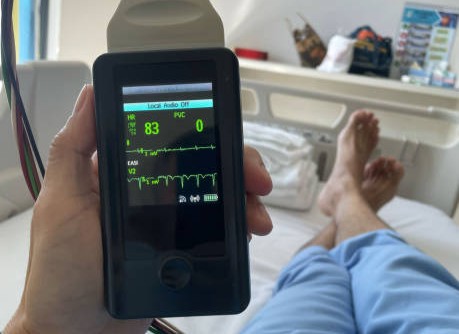
Thu, Jul 3, 2025 1:08 PM
The Vmed Wellness System is transforming how patients monitor their health at home. Whether you're tracking vital signs, managing chronic illness, or simply seeking peace of mind, the system relies on a stable internet connection to send real-time data securely and accurately to healthcare providers.
But here’s the big question—is 5G or WiFi better for powering this remote health technology? Let’s dive into the differences and find out what works best for Vmed users.
5G vs WiFi: What’s the Real Difference?
Before deciding which is best for your setup, let’s break down how both work.
What Is 5G?
5G is the fifth generation of mobile networks. It’s faster, more responsive, and offers significantly lower latency compared to 4G. It works via cell towers and can deliver high-speed internet wirelessly—even in areas without home broadband.
What Is WiFi?
WiFi uses your home broadband service and a router to create a local network. It’s often more stable and cost-effective for long-term use, especially indoors where mobile signals can struggle.
How the Vmed Wellness System Uses the Internet
The Vmed Wellness System is designed to sync with your home’s internet infrastructure. According to this article on how the Vmed system syncs with your internet at home, it connects via WiFi to securely transmit medical data, including blood pressure, heart rate, oxygen levels, and more.
5G Pros for Remote Patient Monitoring
-
Mobility and Flexibility
If you’re often on the move or live in areas where broadband is unreliable, 5G allows you to stay connected wherever there’s mobile service. -
Speed and Low Latency
5G’s ultra-low latency is ideal for real-time updates—like when you need instant feedback on blood sugar or oxygen saturation. -
No Need for Fixed-Line Internet
Perfect for patients in rural or underserved areas without strong broadband infrastructure.
WiFi Pros for Vmed System Users
-
Stable and Consistent Connection
WiFi at home provides a consistent connection, ideal for the continuous sync that the Vmed system requires. -
Data Usage Control
No need to worry about mobile data caps—especially useful for high-frequency monitoring. -
Affordability
As highlighted in affordable internet plans to support remote health monitoring, WiFi tends to be more cost-effective in the long run compared to relying on mobile data.
Which One Is More Secure?
Security is non-negotiable when transmitting sensitive medical data. While both 5G and WiFi can be secure, WiFi with a strong password and WPA3 encryption gives more control over who accesses your network.
However, modern 5G networks also come with enhanced security protocols built in. In both cases, the Vmed Wellness System encrypts all data before transmission, according to how connected health devices support remote patient monitoring.
When to Choose 5G for Vmed
-
You live in an area with strong 5G coverage but poor broadband infrastructure.
-
You travel often and need a portable solution.
-
You want plug-and-play health tracking without setting up home WiFi.
When to Stick with WiFi
-
You use Vmed primarily at home.
-
You’re monitoring multiple users on one network (such as family care).
-
You need predictable performance for scheduled check-ins and routine data uploads.
Real-Life Use Case: Sarah, a Senior with Chronic Conditions
Sarah, a 72-year-old living in Florida, uses the Vmed system daily to track her blood pressure and oxygen levels. With a stable WiFi connection, her system auto-syncs data to her physician without any hiccups. Her adult children can also access updates through Vmed’s caregiver integration.
If Sarah relied on mobile data, she might face usage limits or weak signal indoors. For her, WiFi is a no-brainer.
Hybrid Setup: The Best of Both Worlds
You don’t always have to choose. If you’re tech-savvy or use Vmed in multiple locations, having both WiFi and a backup 5G hotspot can be ideal.
For example, WiFi can be your go-to at home, while 5G keeps things running during travel or power outages.
What About Installation and Setup?
Good news: setting up Vmed with either 5G or WiFi is simple. The system is designed to be plug-and-play, with guided setup instructions and minimal tech knowledge required.
Conclusion: Choose Based on Lifestyle and Location
Ultimately, both 5G and WiFi can work effectively with the Vmed Wellness System. The right option depends on your environment, mobility needs, budget, and internet availability.
If you value consistency, control, and affordability, WiFi is your winner. If you need flexibility and mobile access, 5G has your back.
Just make sure your choice supports a strong, secure, and stable connection—because your health depends on it.